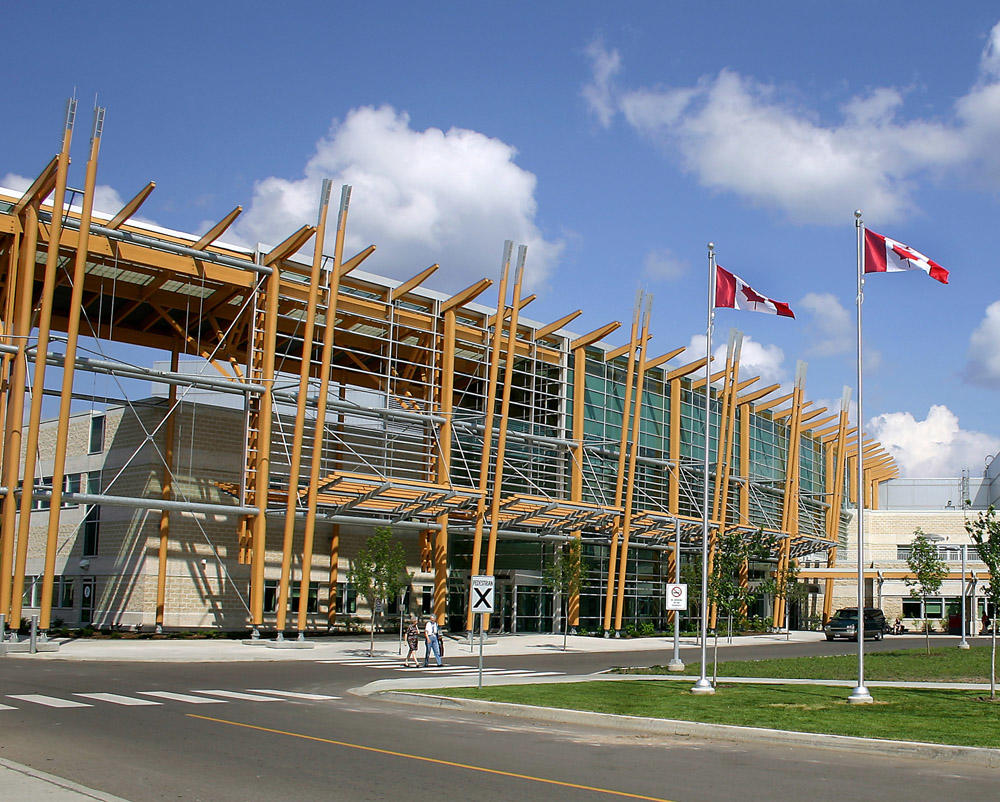Understanding Surge Capacity: We have enough beds
by Communications
 Thunder Bay Regional Health Sciences Centre Board Chair Nadine Doucette and President and CEO Jean Bartkowiak are pleased to announce the appointment of new members to the Board of Directors. All were appointed on November 1, 2017.
Thunder Bay Regional Health Sciences Centre Board Chair Nadine Doucette and President and CEO Jean Bartkowiak are pleased to announce the appointment of new members to the Board of Directors. All were appointed on November 1, 2017.Surge capacity is a situation at Thunder Bay Regional Health Sciences Centre where there are more patients than the normal bed occupancy. As a result, new patients who come through the Emergency Department and need to be admitted often have to wait for a bed to open up, or end up being admitted to temporary accommodations, such as Family Lounges (sunrooms) or day surgery stretchers.
Myth:
The Hospital was “built too small”.
Reality:
We have enough beds.
How can this be true? We asked Hospital President & CEO, Jean Bartkowiak, to explain.
Are there enough beds?
Yes, there are enough beds for acute care patients. Our bed capacity is 375 beds. A large contributing factor in surge capacity is the number of Alternate Level of Care, or ALC patients. For example, on March 27, there were 416 patients admitted to our Hospital. 59 of them were ALC patients waiting to be transferred to more appropriate care settings. If the ALC patients could have been discharged, we would have had 357 acute care patients that day. And empty beds.
What’s an ALC patient?
ALC patients at our Hospital are those who no longer need specialized acute care. They do not need to be in a hospital, but still need some form of health care after their hospital visit, be it in a rehabilitation hospital, or a long-term care facility.
Why can’t ALC patients be sent home?
In most cases, the services they need exceed what community agencies can provide in a health care setting. So, even though they are medically safe to leave from our specialized acute care standpoint, they simply have nowhere else to go until those services become available. Unfortunately, there is currently a shortage of Long-Term Care beds and community services.
How many patients can the Hospital hold?
We have a 375 bed capacity for our admitted patients. For the past few years, we have received additional temporary funding for temporary beds – bringing our current total up to 395 beds. During periods of surge capacity, we may admit 430 admitted patients, and sometimes more, including an average of 60 – 70 ALC patients.
Can you add more beds?
The number of beds a hospital operates depends on the funding it receives from the Ministry of Health and Long-Term Care. A “bed” is much more than a physical bed. It requires medical supplies for the patient in it, the support of specialized staff (housekeeping, dietary, laundry, etc.), and the care of nursing professionals, physicians and other health care providers.
Physically, we could find space for more beds. However, Ministry dollars are better applied to developing community capacity for ALC patients.
Can patients be turned away?
Anyone who requires emergency and specialized acute care services will NEVER be turned away. Nobody is ever “discharged early”. Those who require specialized acute care always have access to it here.
What are you doing about it?
Unfortunately, surge capacity challenges are ongoing. However, we have made great strides in addressing this problem. Along with our partners in health care, we help patients get the right care, at the right time, by the right provider. We have been able to improve patient flow by significantly reducing the average length of time patients stay in the Hospital for their treatment. We are also looking at who truly needs to be in a hospital bed and whether they can be treated as effectively and safely in an outpatient setting, such as day surgery for instance.
This year to date, we have had an average of 393 admitted patients per day, which is an improvement from last year’s average of 406.
Is the quality and safety of care impacted?
Absolutely not. Despite our surge capacity challenges, we remain committed to providing safe specialized acute patient care. The dedication of staff, physicians, volunteers –involved in caring for patients – is truly remarkable.
I know these periods in surge capacity are a strain on our staff, and I am extremely grateful to them.
Is this only a ‘Thunder Bay’ problem?
Hospitals across Ontario and Canada are experiencing this problem. However, our Emergency Department is one of the busiest in Ontario with about 9000 visits per month – which can compound the problem.
Unlike most hospitals in Ontario, we cannot divert patients to another Emergency Department until occupancy is reduced. In addition, of all the specialized acute care hospitals in Ontario, ours is the furthest from a referral centre. Furthermore, we are the only trauma centre, have the only NICU, the only stroke unit, etc. in Northwestern Ontario. Our doors always remain open to all Northwestern Ontario residents who urgently need specialized acute care.